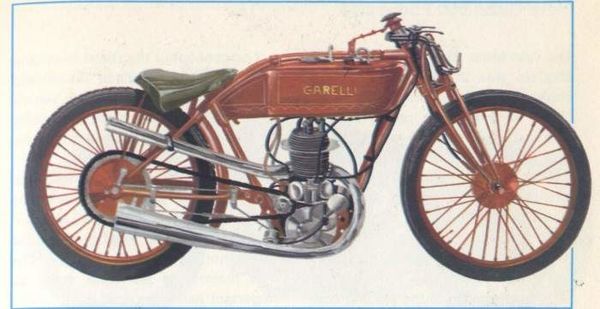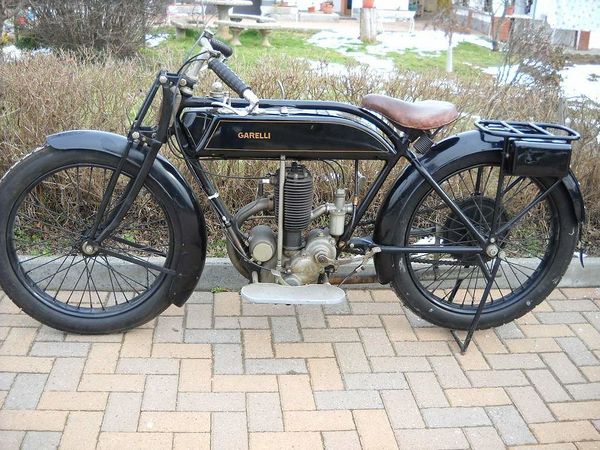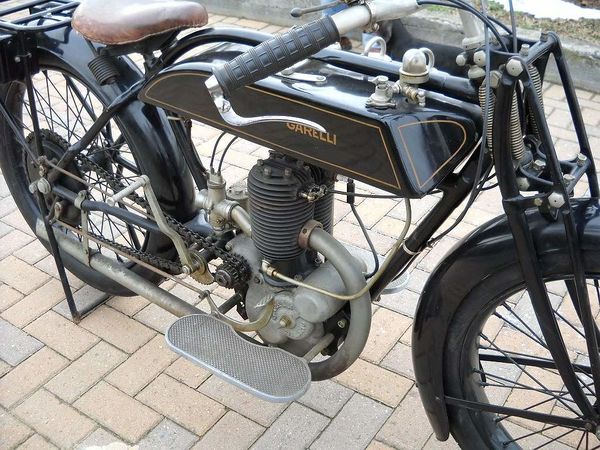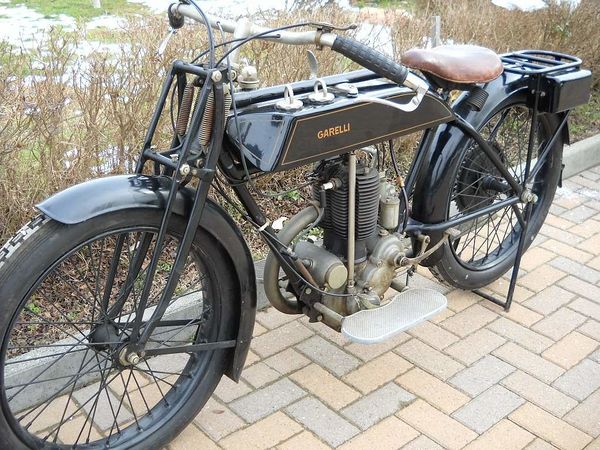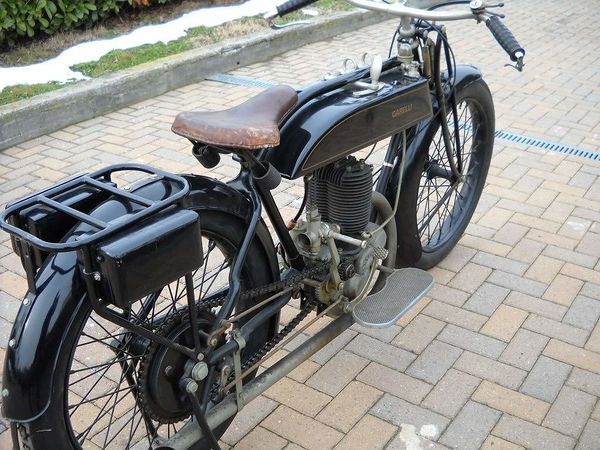Garelli 350
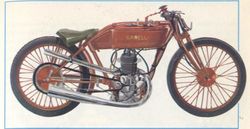 |
|
| Racing Bikes Garelli 350 | |
| Class | Racing |
|---|---|
| Weight | |
| Manuals | Service Manual |
Photos[edit | edit source]
Overview[edit | edit source]
Garelli 350
Before World War I most motorcycle manufacturers considered
only one problem to be open to discussion whether to have side or head valves.
At that time it seemed decidedly original to set out to build a two-stroke
engine. And to have a motorcycle with such an engine win the most important
races of the period made it the stuff of legend.
The Garelli 350 was the fruit of the skill and tenacity of
Adalberto Garelli, former employee of FIAT-Motori Ma-rini, where he learned much
about multicylinder two-stroke engines designed for surfaced submarines. The
first Garelli engine was installed on a military motorcycle used in World War I.
After the war the Garelli 350 was put on the market as an alternative to Italian
and foreign four-stroke engines.
Garelli wanted to demonstrate the reliability of his two-stroke split-cylinder
vehicle as well as its technical potential, so he entered it in the first
edition (1919) of the Nord-Sud (North-South) race. Ettore Gir-ardi rode the
two-wheeler to first place at a speed of almost 25 m.p.h. This was the first in
a whole series of wins. Ernesto Gnesa and Erminio Visioli won all the most
important races both in Italy and abroad with Garellis between 1920 and 1925.
And in 1926 the Garelli 350 set 138 world speed records at Monza.
Motorcycle: Garelli 350
Manufacturer: Meccanica Garelli S.p.A.,
Sesto San Giovanni Type: Racing Year: 1924
Engine: Garelli two-stroke split-cylinder, with one combustion chamber and pin.
Intake on the right, discharge on the left. Displacement 348.2 cc. (52 mm. x 82
mm.)
Cooling: Air
Transmission: Three-speed block
Power: 20 h.p. at 4,500 r.p.m.
Maximum speed: Over 80 m.p.h.
Chassis: Tubular single cradle, open below. Front, elastic suspension; rear,
rigid
Brakes: Front and rear, side drum
